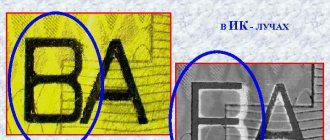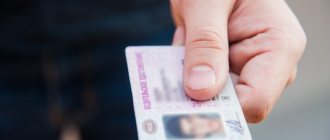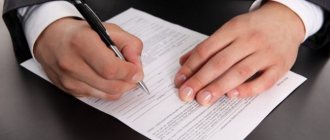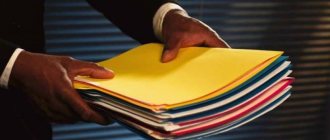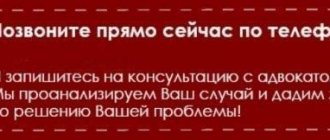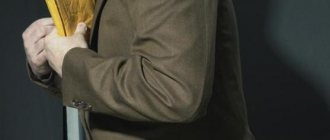What is document forgery
Forgery is the production of papers in an appropriate manner, but containing false information. It is divided into two types:
- Material means making changes by either erasing, etching, or making a completely fake sample.
- Intellectual - made on a form established by law, but containing data that does not correspond to reality.
Application Form
The legislator does not force the use of a standard sample application for falsification of evidence, since such a document has not been provided. It is enough to follow the rules for drawing up a statement of claim established by the Code of Civil Procedure of the Russian Federation.
In accordance with the law, the party alleging falsification of evidence and requesting its verification must:
- Correctly indicate the details of the court to which you are applying.
- Describe the physical evidence that is in doubt.
- Substantiate your doubts with facts and specify your request for verification.
- Attach documents confirming or refuting legal facts relevant to the case.
Based on the results of the inspection, the court, based on the results of the research conducted or based on new facts presented by the parties, recognizes the evidence as fraudulent and excludes it from the case or vice versa. Falsification of physical evidence is a criminal offense.
petitions (applications):
What does Russian legislation say about this?
Forgery of various types of documentation is punishable by law, and under several articles. Let's look at which articles of the current legislation include the concept of forgery.
Article 327. On counterfeiting, production and sale of counterfeit documentation, seals, stamps, state awards and forms
So, in order for this act to constitute a crime falling under Article 327 of the Criminal Code of the Russian Federation on forged documents, it must simultaneously meet the following conditions:
- Presence of direct intent.
- The criminal must pursue the goal of obtaining some benefit for himself. The forgery must be carried out in relation to an official document or identification. The use of false documents themselves in order to obtain any benefits or to free oneself from any obligations. Otherwise, this will be another article.
- It is necessary for the attacker to use this document in the case or give it to a third party.
According to the above-mentioned article, this type of crime also includes:
- forgery of various forms;
- issuing fake awards;
- counterfeiting of various stamps and seals.
There is no clear definition of the concept of “forgery of documents” in the current regulations. But falsification of papers, according to them, will be the following acts:
- use of forms obtained illegally;
- production of fictitious documents using special equipment;
- correction by cutting out, washing off or erasing any text of a document (in whole or only part of it);
- use of seals and stamps made by illegal methods;
- editing an existing original document;
- adding your notes and notes to the original document.
Making changes to a receipt, certificate or form is possible both mechanically and using specialized equipment or chemicals.
Additional articles of the Criminal Code of the Russian Federation
In addition to the main article on forgery of documents, the Criminal Code of the Russian Federation has a number of legal acts that also deal with this criminal act. We present them below along with links to them in the Criminal Code.
- Article 142. On falsification of referendum documents and election documents.
- Article 292. Official forgery.
- Article 292.1. Illegal issuance of a passport of a citizen of the Russian Federation, as well as entering deliberately false information into documents, resulting in the illegal acquisition of citizenship of the Russian Federation.
- Article 322.2. Fictitious registration of a citizen of the Russian Federation at the place of stay or at the place of residence in a residential premises in the Russian Federation and fictitious registration of a foreign citizen or stateless person at the place of residence in a residential premises in the Russian Federation.
- Article 324. Sales or acquisition of official documentation and state awards.
- Article 325. Damage or theft of documents, stamps, seals, or theft of excise stamps, special stamps or marks of conformity.
- Article 327. Production, forgery or sale of counterfeit documentation, stamps, state awards, seals and forms.
Nuances
So, intent or motive is an integral sign of forgery. There will be no corpus delicti if intent is not proven.
The fact of a criminal act is considered committed at the moment the distorting amendments are completed or the writing of a false official document is completed, it does not matter whether the amendments were subsequently canceled or the documentation was confiscated. When considering this circumstance, it is necessary to take into account that the entry into the official register of invalid data, which is the basis for registration of citizenship, is an action falling within the area regulated by Art. 292.1 in part 1 of the Criminal Code of the Russian Federation.
In fact, these are two criminal acts: official forgery, which became the basis for the illegal issuance of a passport of a citizen of the Russian Federation. Official forgery does not require classification as a separate crime if it is a constructive component of another act.
As a separate comment, it should be noted that the qualification of forgery provides for cases where the legitimate interests of citizens or guaranteed rights are significantly infringed. In fact, part 2 of article 292 is a legal norm in relation to part 1 of article 285, which determines the fact of abuse of official powers.
Methods of forgery and what is faked
I think many will be interested in what documents are forged most often. And what is also curious is how the attackers make these fakes. Let us consider with you the so-called manual and several technical methods of falsifying important documentation.
"Manual" method
Forging someone’s signature, as they say, “from memory” is the easiest for experts , since a real specialist will be able to distinguish a fake from the original by various strokes and characteristic curls, and without special equipment.
In addition, it happens that the documentation is signed by someone who has never even seen a real signature, that is, he does not know what to forge. In such situations, an examination may not be assigned to determine a forged signature, since everything is already “transparent”.
Read how to write a statement about a false denunciation to the police.
And here is the question of whether it is necessary to change the STS when changing registration.
Useful article “Responsibility under Article 161 of the Criminal Code of the Russian Federation - Robbery.”
Technical methods of counterfeiting
Technical methods are called counterfeiting techniques using additional means, including the most modern computer technology. Forensic scientists distinguish the following methods:
- Using computer technology - a laser printer or scanning machine.
- Copying - through glass, by pressing or using a copy sheet.
- Redrawing from the original.
- Transferring dye from the original itself to a fake sample using egg white or an emulsion layer of photographic paper.
Types of documents
The most popular for forgery are:
- passports;
- birth certificates;
- driver's license;
- military tickets;
- WWII, pension and labor veteran certificates;
- labor and order books;
- sick leave;
- powers of attorney, notarized;
- service certificates;
- diplomas and certificates of education.
Types of fakes
There are many ways to make a false document. Most often they resort to forging a signature in one way or another.
Manual signature falsification
The least suspicious is an official form with details and a real stamp, but with a fake signature.
The criminal looks for samples of the signature of a real official, trains to imitate it, and after achieving a high similarity, signs the necessary paper himself. Only highly qualified experts can determine the authenticity of a signature. Moreover, sometimes even specialists cannot do it. In such cases, a handwriting expert gives a probabilistic answer. The result cannot be used as a basis for a sentence.
Technical forgery of signature
It is even more difficult to detect a fake if the signature was forged using modern technical means. A graphics or text program can reproduce the original sample with high accuracy. On a printed document it is indistinguishable from the original.
Criminals achieve the same results by making facsimiles.
How can they recognize a forgery?
They recognize counterfeits through special examinations. There are various distinctive features of counterfeits made using technical methods. These include:
- Using chemicals. Missing relief, uneven coloring, presence of particles of a substance used in the manufacture of paper for printing photographs.
- When copying using glass. Thickened strokes, particles of paint on the second side of the paper, different directions of movement.
- When drawing. There are double strokes, angularity of lines, preparatory marks.
- In the case of the copying method using special paper. Traces of paint left from special paper that has copying properties, where the signatures are located, incompletely connected strokes of the carbon copy and the fake signature.
Both a government organization and an independent private company can be involved in research. Based on the results of the work, the experts draw up their written conclusion.
False work record
note
If a fake work book is discovered, the employer can contact law enforcement agencies and if it is established that this person is using a false document to receive pensions or other social payments and benefits, he can be prosecuted for fraud (Article 159 of the Criminal Code of the Russian Federation).
However, if for a particular position one of the qualification requirements is the presence of work experience in a similar or other position, entries in the work book become of great importance.
Currently, on the territory of the Russian Federation, work books of both a new type (put into effect in 2004) and previously established samples of 1938 and 1973 are used, which are equally valid and cannot be exchanged for new ones.
The currently valid form of the work book and its insert was approved by Resolution No. 225, and came into force on 01/01/2004.
The procedure for providing employers with work book forms and an insert in it is approved by Order of the Ministry of Finance of the Russian Federation dated December 22, 2003 No. 117, according to which employers are provided with forms on a paid basis on the basis of an agreement concluded with the Goznak association (manufacturer) or a distributor that meets the requirements established manufacturer. All forms of the work book and its insert have the appropriate degree of protection.
When establishing forgery, the key thing is, first of all, whether the employee is involved in the forgery. For example, if a fake form was issued by the first employer when issuing a work book, and the entries in it correspond to reality, this is not the employee’s fault and the document cannot be considered fraudulent. It is also not considered forgery if the work book form is real, but employers at previous places of work made inaccurate entries.
If such inconsistencies were identified by the employer before the execution of the employment contract, the employee can be invited to issue a duplicate work record book from the previous employer or contact previous employers to clarify the entries that do not correspond to reality.
For your information
A new employer can also correct the information entered in the work book - on the basis of official documents provided by the employer who made the inaccuracy.
Remember that you will not be able to refuse to hire an employee in any case until you establish that the work record book meets all the signs of forgery. And this can be established with certainty only after an examination or on the basis of requests to previous organizations, the archive or the Pension Fund of Russia. As a rule, it is difficult to detect a fake when applying for a job; this fact is revealed later, after a detailed study, comparison of records and seals, detection of additions, erasures, lack of series and number of the work book, watermarks, etc.
In addition, courts, when considering disputes regarding dismissal for providing a false work record book, take into account whether the entries made in this document were significant for making a decision on hiring. For example, if, according to the qualification requirements established for a particular position, an employee can only hold it if he has some work experience, and the record confirming the required experience turns out to be fake, such a document will definitely be forged.
Quite often only the court can finally decide the issue of recognizing a work book as fraudulent and the legality of dismissal because of this.
Punishment for forgery of documents
We already know that punishment, according to the same 327th on forgery of documents, can only occur under certain conditions:
- premeditation of the crime;
- using a forged document for its intended purpose;
- receiving personal benefit;
- if the offender is over 16 years of age.
In other situations, the use of such counterfeits will not entail punishment under this article. For example, when, instead of a required document, another document similar in appearance is presented, this will not be a forgery, but an ordinary deception.
How to punish
In order to bring an attacker who forges documents or only uses them to criminal liability, you should contact law enforcement or judicial authorities.
If the identity of the criminal itself is unknown, then law enforcement agencies will have to carry out investigative and search activities. Then, open a criminal case for violating the law.
Providing knowingly false information to the court
Thank you in advance! giving false testimony, falsifying evidence in a civil case, falsifying documents, forgery of documents, forged documents Collapse Lawyers' answers (8) Similar questions
- How to prosecute for producing a forged document? 27 March 2022, 14:48, question No. 1197032 1 answer
- How to file a lawsuit without documents confirming payment for goods February 10, 2015, 15:02, question No. 720248 2 answers
- How to make a request to the court for a divorce document? January 11, 2015, 15:54, question No. 680344 1 answer
- How to get a statement about official forgery of a judge registered in the crime register? December 11, 2015, 22:11, question No. 1069464 1 answer
- Providing business correspondence to the court/notary - Art.
Responsibility
The offender, depending on the severity of his offense and the consequences, may be subject to either administrative or criminal liability.
Administrative view
According to Art. 19.23 of the Code of Administrative Offenses of the Russian Federation for counterfeiting, subsequent use for the intended purpose and sale of counterfeit papers, as punishment, penalties of up to 40 thousand rubles are imposed on the culprit. with subsequent confiscation of the items of his criminal act.
Criminal view
Liability for forged documents depends on who exactly committed the criminal act, with what motives, and how exactly the document was used.
Article 327 of the Criminal Code of the Russian Federation provides for the following penalties:
- Without aggravating circumstances:
- restriction of freedom to two;
- arrest for up to six months.
- arrest for up to six months;
- imprisonment for a maximum of two years.
- In aggravating circumstances, such as concealing another criminal act, the penalty will be as follows:
- forced labor for up to four years;
- imprisonment up to four years.
- The following penalties apply for the use of knowingly forged documents:
- Penalties up to 80 thousand rubles. or the offender’s six-month income;
- correctional labor for up to two years;
- compulsory work up to 480 hours;
- arrest for up to six months.
Qualification of a crime under other articles of the Criminal Code
The presence of special signs as part of a violation (for example, forged documents in civil proceedings) qualifies it under various articles of the Criminal Code.
Obtaining a loan using fake documents
Providing false information about income in order to obtain a loan qualifies for:
- FL under Art. 159.1 CC>;
- Individual entrepreneur and head of the organization under Art. 176 of the Criminal Code.
Important! Misuse of credit funds is classified as an offense. The bank can sue the negligent borrower and request criminal penalties - from a fine of up to 120 thousand rubles to imprisonment for up to 4 years.
Tax evasion by individuals
The offender includes false information in the declaration in order to reduce the tax base (Article 198 of the Criminal Code). For example, reports non-existent expenses.
Official forgery
In case of forgery (Article 292 of the Criminal Code), criminal actions are committed by an official for selfish purposes (taking a bribe) or due to personal interest. These actions include:
- the teacher entering an undeservedly high grade into the student’s grade book;
- reflection in the statement of non-existent expenses when the accountant embezzles government funds;
- correction of contracts for the supply of goods or services in order to conceal the theft of money.
Example
Plant director E.P. Mironov, wanting to arrange a job for A.P. Ananina’s relative. for the position of senior foreman, falsified the data in her personal file. Namely, he made a false entry about having a higher technical education, which was a prerequisite for providing the candidate with this vacancy.
Falsification of evidence in court
Both the plaintiff and the defendant, their representatives and officials are subject to liability for providing false evidence when considering a case (Article 303 of the Criminal Code).
Statement on falsification of evidence in civil proceedings:
Example
While considering a civil dispute regarding the division of joint debts, Kudryakov V.A. provided a fake agreement to receive a loan in the amount of RUB 500,000. from a relative. Defendant Kudryakova S.A. stated that she was not aware of this loan, and her family had not maintained relations with the said relative for a long time.
As a result of the underlining examination, it was established that the agreement was concluded on the eve of the court hearing, and not a year ago. As a result, Kudryakov’s claim was left unsatisfied. His ex-wife filed a statement about the falsification of the evidence provided by Kudryakov in court, with a request to bring him to justice.
Forgery or destruction of transport number
Removing an identification number from a body or engine, as well as applying a false number to them (Article 326 of the Criminal Code), is usually carried out when a car is stolen. This also includes counterfeiting a state registration plate.
Challenging
Being well acquainted with the law, or with a person who is familiar with it through professional duties, you can try to challenge anything. Let's consider two options: when you are accused of producing false documentation and when someone else did it, and the consequences of this affected you directly.
When you are accused of forgery
Here we do not recommend that you take any action without an attorney. The risk is not justified in this situation.
Once you have secured legal support, you can try to reach a settlement with the accuser. This must be done strictly under the supervision of your lawyer. If it was not possible to resolve the issue peacefully, and a criminal case was opened against you, be sure to request a copy of the decision about this from the investigator.
After that, with the help of the same lawyer, build your line of defense. Namely:
- Insist that you were not aware that the document was not real, and of course you did not forge it.
- Try to have your case considered under Art. 327 part 3. We have already considered the punishment under this part of this article on the use of forged documents.
Once you have formed your position, the lawyer should prepare you for the interrogation itself. His presence is also mandatory, otherwise you may harm yourself with careless answers to the questions asked by the prosecution.
The lawyer should request a handwriting examination of the case, which can prove your non-involvement in this forgery. In addition, he can challenge the fact that it was you who produced these documents.
It can also be questioned whether you knowingly used these counterfeits. But this will already mean that you did not have any malicious intent when you committed this criminal act. As a result, you will be able to avoid criminal liability, as well as a criminal record. Well, in the worst case scenario, the lawyer will achieve a reduced sentence.
Use of forgery
So, if you reasonably doubt the authenticity of any documentation that you have submitted as evidence in any legal case in which you are a party. In this case, you need the judge to admit that these documents are falsified. To do this, you can resort to one of the options, and as soon as possible:
- Submit an application to law enforcement authorities at the address of the judicial authority in which the case is being considered.
- Submit your application during the trial itself. It can be done in writing, but an oral petition will also be quite sufficient. But it is necessary to ensure that it was included in the minutes of the court hearing.
This method is preferable, since it is provided for by the administrative and civil legislation of our country. But, if the judge refused to consider your question regarding false evidence, then use option 1.
When the court has accepted your application, it appoints an examination to determine the fact of forgery. It can be handwriting or forensic technical. Or, both at the same time, as a comprehensive check. Using the first, the authenticity of the signatures present on the papers is determined. And by carrying out the second, they determine the method of compiling these samples, their age, and the unity of the text present in it.
Technical and forensic research
Technical and forensic research objects also include technical means, materials, devices and substances used during the production of a document or making changes to it.
The main tasks of forensic examination of documents are: consideration of the method for producing a document in parts or as a whole; recognizing the method of counterfeiting; restoring a document to its original form, which subsequently became unreadable for some reason; examination of document materials for stamps and seals to understand the purpose for which these symbols were applied and identification of cliches; consideration of the means used during the production of this document; determination of the statute of limitations of the relative and absolute nature of a document or its individual elements.
The document is analyzed not only by the expert himself, but also by the investigator in an independent manner or with the help of a certain specialist. Before ordering a technical and forensic examination, you need to know for sure that there are all the necessary grounds for this.
Note 1
When documents necessary for the investigative process are discovered, it is not recommended to file them, but rather to put them in a separate envelope, which is then attached to all case materials. Old documents are placed between two layers of transparent material and glued together at the edges with adhesive tape or tape.
The expert receives the documents in the condition in which they were found; It is forbidden to place any marks on the documents, they cannot be folded and, most importantly, they cannot even be stapled; It is recommended to store documents in a dry and dark place, so that there is no exposure to light, dampness, as well as various types of substances with physical, chemical and mechanical properties.
You definitely need to know and remember that not only the content of the document itself is important, but also the traces that are on the document, that is (hands, etc.), therefore it is advised to take the document with special tools such as tweezers.
